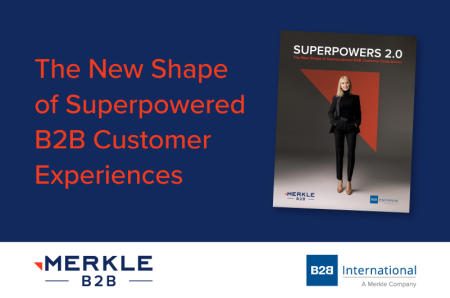
A company’s brand is among its biggest assets as it provides credibility and a point of differentiation. Building and maintaining a strong and consistent brand position that resonates with the market is a challenge faced by many of the largest B2B organizations, particularly as scaling and entry into new markets takes place or new brands are acquired.
To tackle this challenge, leading B2B brands often look to quantitative brand health tracking programs to understand brand positioning, perceptions and performance for parent and product brands, and to use market insights to inform strategic planning and tactical initiatives.
But where should B2B organizations be focusing their attention, both strategically and tactically, to build stronger and more differentiated brands? And what specific role does brand research play in helping them succeed?
Brand Challenge #1: Building mental availability
Research by Byron Sharp of the Ehringberg Bass Institute shows that at any one time, only 5% of a given market is “in-market” to purchase.
When the times arises, suppliers want customers to automatically think of their brand or at least place it in the consideration set. The concept of mental availability is the probability that a buyer will notice or think of a certain brand in buying situations.
Achieving mental availability is a long-term effort which involves conditioning customers through repeated exposure; connecting with buyers long before they come to buy. It requires broad-reach media because the aim is to prime everyone in the market, regardless of whether or not they are currently in the path-to-purchase.
Because most of the target audience are not in the market at the time they are exposed, it cannot be assumed they will pay close attention to a brand’s messaging. Successful brand-building therefore relies heavily on emotional priming since that cuts through regardless of whether people are interested in the product and helps to create long-term memory structures.
Building and maintaining mental availability over the long-term is not easy, however. A challenge many B2B brands face is a general lack of understanding when it comes to the health of their brand. Without this understanding, it’s difficult to know how a brand compares to competitors across the target market and where its strengths and weaknesses may lie.
Brand health tracking programs address this challenge by measuring brand funnel metrics such as awareness (unaided and aided), familiarity, consideration, usage, share of wallet and share of mind of the brand and its competitors. This baseline understanding of brand health helps to identify immediate areas for improvement and tracking these same metrics over time helps to measure the effectiveness of any subsequent brand-building and marketing activities.
Brand Challenge #2: Delivering emotionally engaging experiences
Given the importance of emotional engagement and mental availability in building strong B2B brands, it’s no surprise that brand building and positioning emerged as the number one strategy for B2B companies in our recent study.
Yet despite this increased focus, most B2B brands are failing to fully engage customers on an emotional level.
In 2020 and 2021, we undertook two extensive research studies into the factors that drive the “Ultimate B2B Customer Experience”: Architecting the Ultimate B2B Customer Experience and The New Shape of Superpowered B2B Customer Experiences. This research was informed by more than 3,000 interviews with B2B buyers and decision-makers worldwide.
These studies found that the best B2B brand experiences are driven by 4 “Superpowers” and 30 specific levers for adding value, balancing drivers that matter to the buyer’s organization and drivers that matter to the individual buyer.
The “Superpowers” that matter to the buyer’s organization:
- Reliability – “A brand we can trust to deliver”
- Understanding – “A brand that gets my company’s needs”
The “Superpowers” that matter to the individual buyer:
- Enrichment – “A brand that makes my work life better”
- Pre-eminence – “A brand people are proud to work with”
What these 4 “Superpowers” tell us is that B2B buyers want to have more emotionally engaging experiences with B2B brands.
Yet when we surveyed more than 300 senior marketing professionals at large corporates across the world and asked them what they think of the brands they use, we found that B2B brands are failing to deliver the experiences buyers are seeking.
While 73% of B2B decision-makers feel that the brands they use are “trusted”, brands are falling short on being thought of as “eminent” (66%), “enriching” (63%) and “empathetic” (57%).
Bridging the gap between customer expectations and the experiences brands deliver is key to building a strong and emotionally engaging B2B brand. In fact, our research shows a clear connection between brand success and CX excellence, with CX Leaders (brands who perform strongly on at least 5 of our 6 pillars of customer experience) being much more likely to track brand health than CX Laggards (brands who don’t perform strongly on any of the pillars).
Brand tracking programs can help B2B organizations bridge this gap by measuring brand perceptions, satisfaction, and performance over time. These metrics help to establish how strongly a brand connects with the emotional needs of the target market, how strongly it differentiates itself in the market and how well the brand’s products and services perform against key attributes compared to its competition.
Best practices for brand measurement and benchmarking
Having worked with hundreds of leading B2B brands across different sectors and geographies to implement successful brand research programs, we’ve been able to build a databank of brand metrics to help clients interpret their scores as well as establish best practices for getting the most out of brand measurement and benchmarking.
Embed benchmarking within the culture
Ensure the research captures a baseline of performance and then track this over regular intervals. Use the findings to set ambitious but realistic targets for improvement. Business units and brand leaders should then be supported to meet these targets, with brand tracking research used to provide feedback on the effectiveness of investment and strategic planning.
Understand the context of benchmarking
Deeper insights and therefore more grounded strategy come from comparing brands in multiple ways. Comparisons against market leading brands within and across industries is important to set the bar against a best-in-class standard.
Widen the focus beyond one metric
Over time, what makes a “great” brand within an industry can change as market perceptions shift. Without a multi-faceted approach to measuring performance, it is hard for businesses to know if their focus areas are still important, and whether there is an emerging industry-wide problem in the market (providing an opportunity to differentiate).
Our holistic approach to measuring brand health
At B2B International, we take an holistic approach to brand health tracking to ensure the insights we provide can inform any number of strategic objectives and decisions for our clients. Our brand tracking programs provide a 360-degree assessment of a brand’s health to help B2B organizations differentiate effectively, decide where to focus brand investments, and refine their brand architecture.
To learn more about our approach to brand health tracking, we’ve created an interactive PDF to guide you through each part of our approach. The PDF will cover the three perspectives of measuring brands, the metrics to measure those three perspectives, the 4 audience perspectives of brand measurement, and how we bring it all together to drive change in our clients’ businesses.
Readers of this article also viewed:
- How to Determine the Strength of Your B2B Brand
- B2B Brand Masters Podcast Series: Catch up on Episodes 1-4
- The Brand Practitioners Podcast Series: Catch up on Episodes 1-4
- 3 Critical Steps to Drive Brand Growth Through Insights
- The Importance of Measuring Brand Strength
- Peter Weinberg’s 6 Benefits To Brand Building




